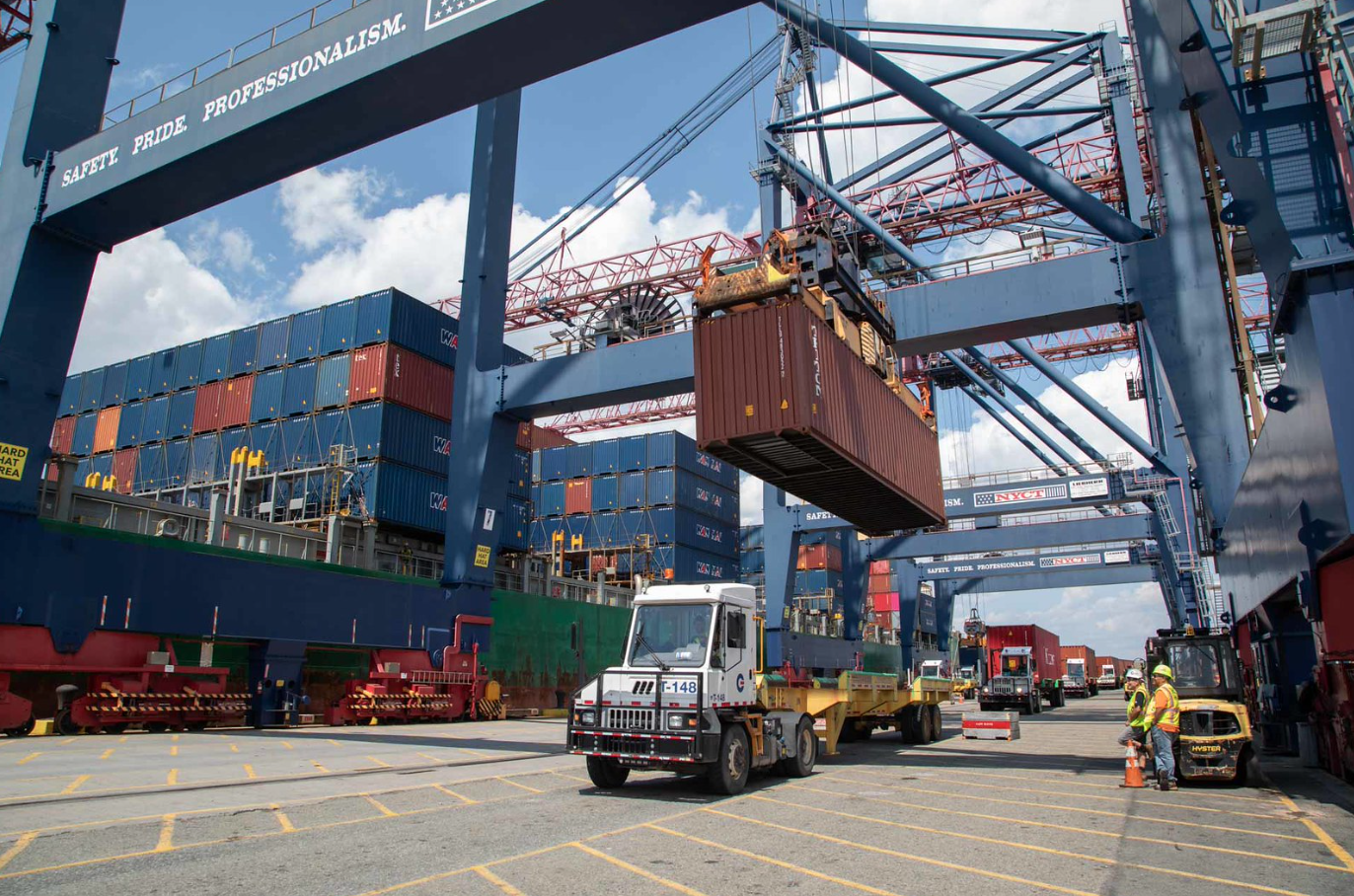New York, New Jersey Port Budget
Following a month-long public comment period, the Port Authority of New York and New Jersey Board of Commissioners recently approved the agency’s $8.3 billion capital and operating budget for 2023.
The 2023 budget consists of $3.7 billion for operating expenses, $2.9 billion for annual capital spending, and $1.7 billion for debt service and deferred expenses.
Following a $3 billion revenue loss during COVID, the bistate agency’s 2023 budget ensures that the Port Authority remains committed to enhanced standards for safety, security, cleanliness, and customer service, while improving or rebuilding its legacy infrastructure to improve customer experience, accommodate the region’s future growth and invest in the economic development of the region.
The 2023 budget invests $2.9 billion in capital spending to modernize existing facilities or build new, state-of-the-art facilities, including:
- The ongoing transformation of the Port Authority’s three major airports into world-class transportation hubs.
- Plan for the replacement of the Midtown Bus Terminal with a multi-facility terminal complex built to increase bus capacity and help ease city congestion.
- Implement a new 21st century fare collection system for PATH and AirTrain.
- Expand capacity on the PATH commuter railroad.
- Essential state-of-good-repair work critical to the upkeep of its legacy bridges and tunnels.
- The ongoing $2 billion Restoring the George program, which will rehabilitate or replace nearly every component of the world’s busiest vehicular crossing, the agency’s 90-year-old George Washington Bridge.
In addition to the capital spending needed to rebuild the region’s aging infrastructure with 21st century facilities, the approved budget also will:
- Fund the largest security budget in agency’s history — nearly $1 billion — including funds to continue to strengthen the agency’s cyber security posture.
- Provide nearly $2 billion for operations and maintenance of the agency’s assets as post-pandemic volumes increase across facilities.
- Dedicate more than $17 million for new technology, customer experience, and employer-of-choice initiatives.
The approved budget also will invest more than $55 million to advance the agency’s net zero-emissions future and climate resiliency goals.

Global Container Terminal-NY
“The commissioners’ approval today of the 2023 budget reflects the importance of the agency’s investments in building new world-class facilities and modernizing our legacy infrastructure into 21st century facilities so that we can continue to operate at the highest level,” said Port Authority Chairman Kevin O’Toole. “We remain laser-focused on building a future that benefits all users of our facilities and supports the region’s economy.”
“This budget makes the most of our efforts to recover the $3 billion of lost revenues that the agency experienced during the first two years of COVID, and emerge as a leaner, more efficient operation,” said Port Authority Executive Director Rick Cotton.
“Our 2023 budget acknowledges the difficult economic environment that we all face, while providing the necessary resources to maintain, improve and grow our assets responsibly to the benefit of the entire region.”
Automatic inflation-based adjustments at the bridges and tunnels are scheduled for implementation on Jan. 8, 2023, and for March 5, 2023, at the AirTrain rail systems, as established by three resolutions by the Port Authority’s Board of Commissioners (2008, 2011, 2019).
From September 2020 through September 2022, the consumer price index (CPI) increase totaled 14 percent, which has triggered $1 increases in auto tolls at tunnels and bridges, as well as AirTrain fare increases of 25 cents. Fares at PATH remain at their current level. Discount bridge and tunnel toll and AirTrain fare plans will continue to remain in effect.
The agency’s approved 2023 core operating expense budget of $3.6 billion reflected an increase of $112 million, or 3.2 percent, compared to the 2022 core operating expense estimate. It will fund increased labor, security, and maintenance costs due to increasing volumes at Port Authority facilities, while demonstrating the ongoing prudent management of the agency’s fiscal resources, from cost reduction measures the agency took at the pandemic’s onset to the actions it has taken over the past two years to manage costs responsibly.







